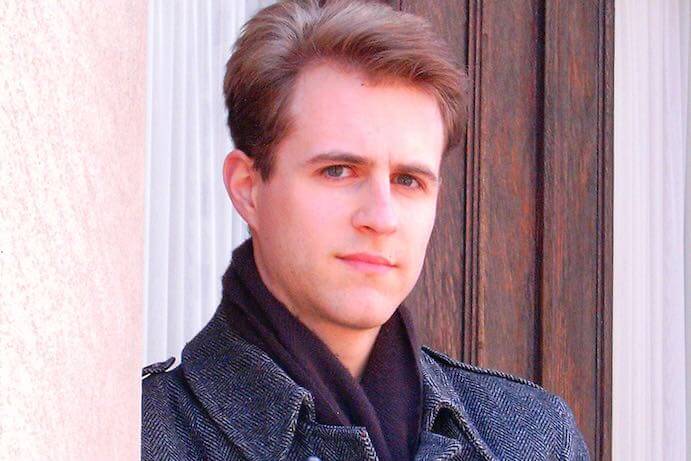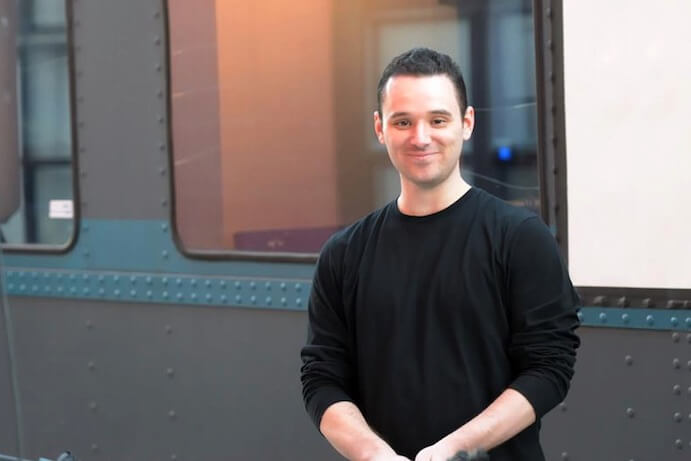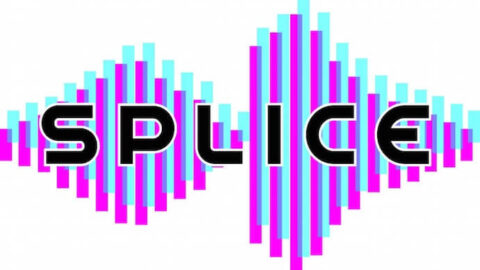The SPLICE Institute finished its second year as a unique festival and training ground for musicians interested in combining technology with instrumental performance. More than doubling its participation from last summer, several dozen composers and instrumentalists spent a week at Western Michigan University learning about practical technology, theory and aesthetics, and programming for computer music. Each night featured concerts by faculty performers, including the SPLICE Ensemble on July 1, 2016. Keith Kirchoff (piano), Adam Vidiksis (percussion), and Sam Wells (trumpet) presented a rich and cohesive concert with a Modernist through-line, featuring electroacoustic works by Joo Won Park, Christopher Biggs, Keith Kirchoff, and Karlheinz Stockhausen.
The concert began abruptly, with the premiere of Joo Won Park’s clever and playful Singaporean Crosswalk. SPLICE Ensemble (joined by guest performer Élise Roy) abruptly stood up from their seats among the audience with laptops in hand, their small speakers pulsing with rhythmic, lo-fi beeps. They began to scurry around the hall with determination along seemingly random paths. A software “score” on each screen gave instructions to each performer as the harmony and synchronized rhythms changed automatically. Sometimes they sat down next to audience members until the screens told them to stand up and walk again (overheard whisper: “This is just like Pac-Man!”). As they moved around the hall, they cupped their hands over the small speakers and changed the sound through feedback from the laptops’ built-in microphones.

The most interesting part of the piece was the spatialization, and because of the articulate and high-pitched sounds that sounded like crosswalk indicators, listeners could track each performer’s movement around the hall without seeing them. The strict metric grid blurred as they reached the outer edges of the hall, making the audience’s awareness of space and distance even more heightened. It seemed clunky for each performer to have to carry a laptop (versus a tablet or phone), and it would be interesting to see such a piece with a more performers, like a busy urban crosswalk.
Next on the program was festival director Christopher Biggs’ Letter to the Moon for prepared piano, percussion, trumpet, and interactive electronics. Biggs negotiated the full ensemble’s unconventional instrumentation by turning all three performers into percussionists, even Wells, who often clanked his trumpet valves noisily and rang a triangle hanging from his stand. The piece was a series of swelling, tightly packed textures. Its angular counterpoint suddenly coalesced into an assertive unison rhythm before dissolving back into an ornamented tangle of intersecting lines. The electronic sound was mostly live processing of the acoustic instruments, but rather than applying a global effect to render each instrumental timbre surreal and distant, the electronic modification was more like preparation, akin to the screws in the piano strings. Subtle delay and tremolo changed many times within each phrase, mostly avoiding the extreme registers and synthesized timbres common in electroacoustic music. This allowed the full ensemble to play together without being overwhelming, but it did at times make the electronics seem superfluous. However, the detailed 4-channel spatialization helped give them a more distinctive role as they surrounded the audience.

Keith Kirchoff’s Irrational Rationalities, also for the full ensemble, was inspired by Alvin Loving’s 1969 painting “Rational Irrationalism,” comprising geometric shapes that appear physically impossible upon close inspection. Kirchoff’s ability as a pianist/composer was on display, beginning with a high-register gnarl of passagework. With puzzling interjections from Vidiksis and Wells as they crescendoed and expanded into full register, the electronics often added a distorted edge to the instrumental timbre. The piece invoked a wide variety of recognizable gestures and styles, shifting in sudden, unpredictable succession. At one point, Kirchoff suddenly turned to the celesta next to him, playing a music-box tune, its innocent harmony warping as if the instrument’s metal bars were melting in the summer heat. Vidiksis joined on vibraphone, followed by Wells on a leaping trumpet tune, the fugal texture eventually unwinding into a hazy drone. Though the piece was dense in its number of ideas and its constantly-thick textures, it was just the right length and its performance deft enough to appeal to the lighthearted – rather than mannerist – side of postmodernism.
The centerpiece of the program, Karlheinz Stockhausen’s Kontakte 12 1/2 (1959-1960) was imposing before the performers even entered: Kirchoff’s piano flanked by a few tables with handheld percussion instruments on them, a string of large almglocken bells strung like prayer flags above its bench; Vidiksis’ percussion setup a gleaming forest of tom-tom stands, hanging gongs, and mallet instruments. A large tam-tam and gong sat between the two outer stations. Both performers met the challenge of the 34-minute piece with virtuosity, navigating the difficult lines and smoothly switching among multiple instruments (and dashing to and from the center station). There’s nowhere to hide in Kontakte; so much of its power relies upon precise timing and the contrasting characters of simultaneous gestures and timbres. Vidiksis and Kirchoff’s cohesion was clear in the periodic episodes of unity, preceded by calm nods across the stage to each other. At times both performers suddenly rattled sleigh bells together, or swirled upturned bongos with ball-bearings inside before returning to more divergent roles.

A significant piece in the composer’s electroacoustic output, Kontakte contains many Stockhausen signatures: spiky harmonies and intricate rhythms, the endless procession of moment to disjunct moment, the sprawl and spectacle of the performance. Despite its age, the piece sounded fresh, due to Stockhausen’s careful consideration of timbre, articulation and gesture in uniting the electronic with the acoustic (in fact, the original version of Kontakte was completely synthesized, the composer later adapting it for piano and percussion). Vidiksis’ crisp attacks on the tom-toms were answered by popping sine tones, while Kirchoff’s thunderous low clusters set off washes of sustained buzz. The four-channel diffusion of the electronic sounds surrounded the audience, sometimes spinning or racing from front to back. The legacy of Stockhausen’s electroacoustic modernism was evident in the works that preceded it, making for a unified program.
The SPLICE Institute’s infectious enthusiasm was clear from the long applause at the three concerts the following day, in which participant performers presented world premieres by their composer peers. A wide range of skills were represented, from composers or performers working with electronic media for the first time to experienced electroacoustic musicians trying out new techniques. No doubt the SPLICE Institute will continue to grow as a hub of contemporary electroacoustic performance.
























